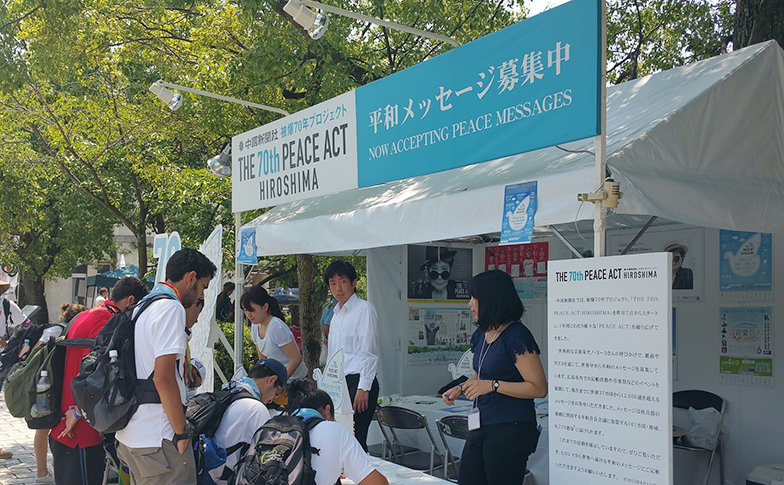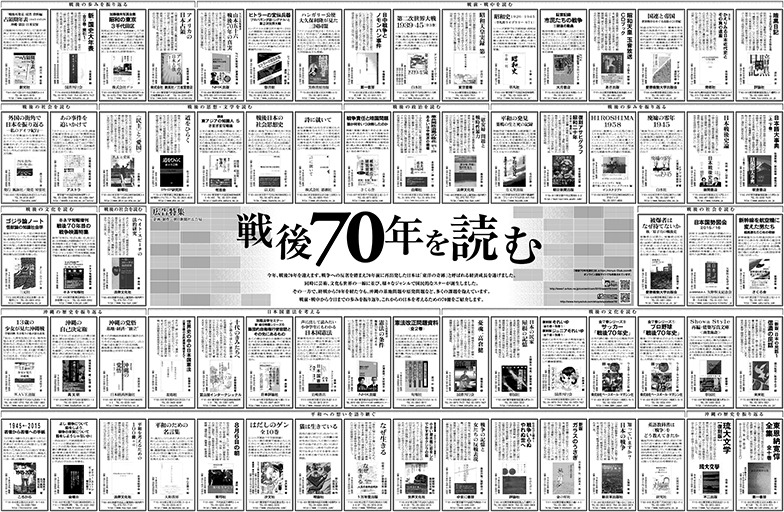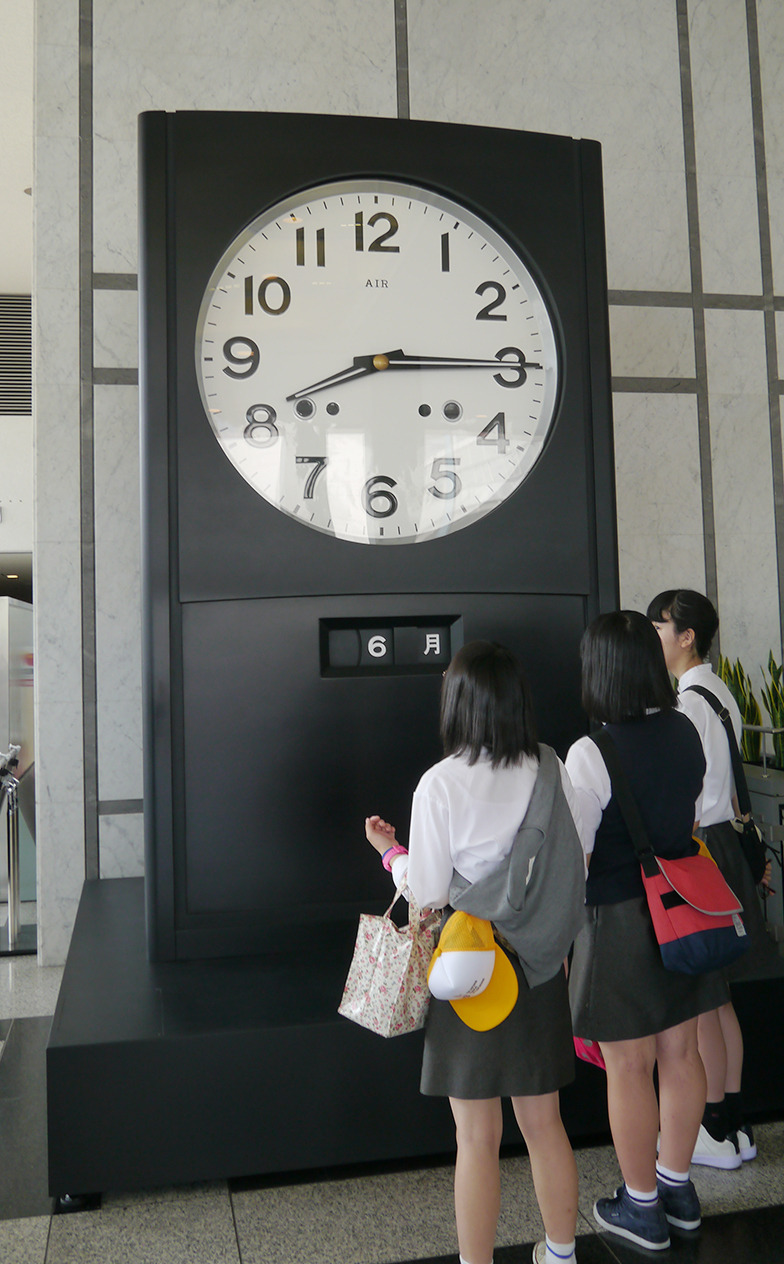Note: This website was automatically translated, so some terms or nuances may not be completely accurate.
"70 Years After the War: Media Initiatives" From preserving precious memories to spreading new prayers (1)
Thoughts on Peace: Now More Than Ever
August 15 marked the 70th anniversary of the end of World War II. To commemorate this significant milestone, various media outlets have engaged with the war from multiple perspectives, launching special features, projects, campaigns, and events. Leveraging their unique characteristics and strengths, they have devised creative ways to convey the importance of preserving memories and records of the war, as well as prayers for peace. Here are some examples.
Chugoku Shimbun
Sending Submitted Peace Messages to the World
"We want to start a 'peace' movement from Hiroshima that engages the world." On August 6 last year, Chugoku Shimbun launched its 70th-anniversary project "THE 70th PEACE ACT HIROSHIMA," leading up to this year's August 6. Kicking off with a page featuring a call to action by artist and peace activist Yoko Ono, this international participatory project disseminates "peace messages" submitted by celebrities and ordinary people from Japan and abroad to the world. Messages from approximately 40 countries worldwide exceeded 15,000 submissions (deadline: August 16). Messages will be published in newspapers and on a special website. Representative messages will also be delivered to 6,779 cities in 161 countries and regions worldwide that are members of Mayors for Peace, via the City of Hiroshima. The website features an interview with Mr. Ono sharing his thoughts on peace, along with messages from special supporters including singer Tatsuya Ishii. Furthermore, on May 4, the "Peace Act Hiroshima Music Festival" was held at Hiroshima Peace Memorial Park, featuring Tokiko Kato, Hitomi Shimatani, and musicians connected to Hiroshima, to emphasize the importance of peace.
www.peace-act-hiroshima.com/


Asahi Shimbun
Publishing Advertising Project Introduces 70 Books Reflecting on the Postwar Era

The Asahi Shimbun Company reported on the 70th anniversary of the postwar era from various angles and, with the support of 58 publishing companies, published an advertising feature titled "Reading the Postwar 70 Years" on August 3. The feature introduced 70 books across a wide range of genres—including politics, society, culture, the Japanese Constitution, and Okinawan history—that reflect on the past and serve as guides for considering Japan's future. Additionally, 20,000 copies of a booklet summarizing the feature were produced and distributed to bookstores nationwide with the cooperation of the two major book distributors, Tohan and Nippan.
Mainichi Newspapers + TBS Television
Exhibiting Testimonies and Stories Written on Postcards
Aiming to record testimonies related to war through video and print, and to convey the horrors of war and the preciousness of peace to the next generation, Mainichi Newspapers and TBS Television have been running the joint project "A Thousand Testimonies" since last August. They widely solicited testimonies and episodes related to war via postcards and the web. As of August 31, 1,550 submissions were received, including not only from individuals who experienced the war firsthand—such as former soldiers and civilians affected by the devastation—but also letters from family members and bereaved relatives. The Mainichi Shimbun published the submitted testimonies and stories on a special website and featured them in newspaper specials and series. TBS aired the special program "A Thousand Testimonies Special: My Town Was a Battlefield Too" in two parts on March 9 and August 15. Furthermore, from July to August, the "Postcards Telling the Memories of War: The Thousand Testimonies Exhibition" was held at three venues, including the Dai-ichi Life Gallery in Chiyoda Ward, Tokyo. It displayed approximately 100 submitted postcards, related items, and ink writings by officers. The postcards, densely filled with small handwriting, conveyed a strong sense of urgency: "I must write this down now."
mainichi.jp/feature/sennosyougen/

Hiroshima Television
Sending a Single Character Imbued with Thoughts for Peace
Hiroshima Television Broadcasting has been running the "Piece for Peace HIROSHIMA" project since 2012. Launched to mark the station's 50th anniversary, the initiative invites people to write a single character expressing their wish for peace on paper recycled from origami cranes sent to Hiroshima Peace Memorial Park from around the world. Approximately 18,000 characters submitted from Japan and abroad are featured on a special website.

On August 4th, as part of the campaign, an art piece by Yoko Ono, who wrote the first character "夢" (dream), was exhibited at the Hiroshima International Conference Center. With a deep connection to Hiroshima, Ono was asked to create art reflecting the project's spirit, expressing the wish to "share the vitality of Hiroshima." The piece, titled "HIROSHIMA AIR CLOCK," is a black pillar clock approximately 3 meters tall. Its hands are frozen at 8:15, the moment the atomic bomb was dropped. Below the clock face, the numbers "6" and the word "月" (tsuki, meaning "month") are displayed, signifying that August 6, 1945, was a Monday. It embodies Ono's wish: "To maintain and achieve the peace we have now, both locally and globally, let us return to the moment of the atomic bombing 70 years ago on August 6th and never forget that agonizing instant when we couldn't even breathe." The public unveiling was featured in a special program.
www.htv.jp/pfp/

TV Nagasaki
Music Festival Sends Message of Peace Nationwide
TV Nagasaki held the music festival "RISING PEACE FES 2015 in NAGASAKI" at Nagasaki Prefectural Baseball Stadium on August 1st and 2nd. It was planned to send a message nationwide expressing prayers for world peace and respect for the efforts and wisdom of those who came before. With the cooperation of Rising Production, the festival adopted a reasonably priced ticket system to encourage participation from families and as many people as possible. On stage, 11 artists affiliated with Rising Production, including MAX, DA PUMP, Mariya Nishiuchi, Daichi Miura, and Airi Taira, delivered performances, receiving enthusiastic cheers from the audience. The climax came when all performers joined hands, linked arms, and united with the venue to sing "We Are The World" in chorus. Over two days, approximately 12,000 attendees from across Japan (with about 500,000 watching the LINE live stream) gathered in Nagasaki, 70 years after the atomic bombing, to pray for peace through music.

Related Article:
"70 Years After the War: Media Initiatives" - From Passing Down Precious Memories to Sending New Prayers (2)
[September 29, 2015]
Was this article helpful?